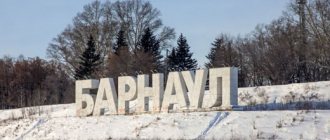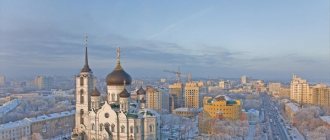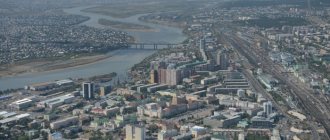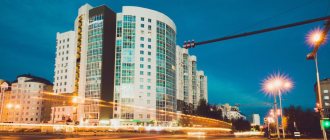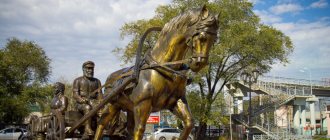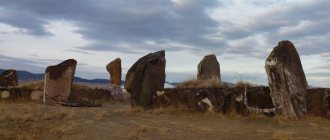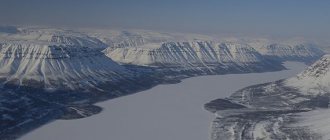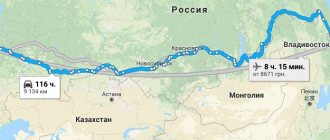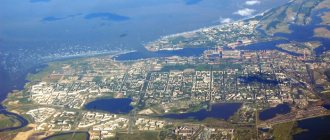Climb to the top of a lava mountain and look into the smoking mouth of a volcano, go in search of killer whales and whales, conquer inaccessible landscapes in jeeps and helicopters, and then swim in hot springs under the open sky. Listen to the hubbub of geese at bird markets, see with your own eyes the simple life of the Itelmens, Koryaks and Evens, taste the salt of the ocean and enjoy its gifts.
Kamchatka is a land that beckons with lush nature and promises bright adventures, where everyone in love with Russia dreams of visiting. Here, if you listen, you can hear the heart of the Earth beating. The project “Travel with the Russian Geographical Society” together with the tour operator RussiaDiscovery and the Vulcanarium museum offer to go to the ends of the world and explore the treasured Kamchatka from three angles - from land, water and air.
Where is Kamchatka located and the origin of its name
Kamchatka on the map of Russia occupies 2.8% of the territory. A huge peninsula in the northeast of the country, stretching 1200 km almost exactly to the south. Kamchatka and the Kuril Islands, which extend it, separate the Sea of Okhotsk from the Pacific Ocean. The Kamchatka region, with its center in Petropavlovsk-Kamchatsky, was formed in 2007 by the annexation of the Koryak Autonomous Okrug to the Kamchatka region.
The peninsula got its name from the river of the same name. The toponym “Kamchatka” first appears in 1667 on a map of Siberia drawn by S.U. Remezov by order of the governor of Tobolsk P.I. Godunov. Historians have put forward dozens of theories to explain this name.
One of them suggests that the river received its name from the name of matter. Silk fabric was called “Kamchatka” in Rus' because it was brought from China, from “Kama Khan”. This theory was confirmed after the discovery of Witsen’s map, which contains “Damast River”, translated from Dutch as “Kamchataya River” (under Peter I, such fabric was brought through Damascus, so it was called “damask”).
Kamchatka hits
Geysers are cousins of volcanoes. The former spew boiling water, the latter – magma. They are often close neighbors. They are generated by the hot bowels of the earth. The Geyser family comes from Iceland. This was the name given to the springs that periodically emitted fountains of hot water. "Geyza" means "to gush" in Icelandic.
Russian Kamchatka has many volcanoes. This means there must be geysers! The way it is. There is even a whole Valley of Geysers. There is no other like it on the Eurasian continent. And in the world, Kamchatka is considered the largest. The natural miracle was discovered in 1941. Tourists from all over the world come to see it.
Geyser
The valley is part of the Kronotsky Nature Reserve. In addition to geysers, there are thermal springs and mud pots in which liquid mud gurgles. In total, there are 50 springs and 40 geysers on a four-kilometer stretch. In a second, 250 liters of liquid pour out from the depths!
Local landscapes seem to be borrowed from another planet. The valley is decorated with round craters with turquoise water and cone-shaped wells. The soil is colored yellow, red and white. The place is very unusual, which is why parts of the famous science fiction film “Sannikov Land” were filmed here.
Thermal source
In 2008, the Valley of Geysers was included in the honorary list of the “Seven Wonders of Russia”. Tourists are brought here by helicopter. On the way from above you can admire the Karymsky and Maly Semyachik volcanoes. It is allowed to move around the reserve only on wooden platforms. The observation decks offer fantastic views! This is impossible to forget.
The first visit by Russians to the land of Kamchatka
In 1648, Fedot Alekseev Popov, together with Semyon Dezhnev Sea, went to the mouth of Anadyr on Kochs in search of new fishing areas. The ships were caught in a storm and Popov was separated from his companions. When his koch was washed to the ground, he turned out to be the first Russian explorer in Kamchatka. This became known 80 years later, when the Bering expedition rediscovered the passage between Asia and America.
In 1697, the Yakut Cossack Vladimir Vasilyevich Atlasov, together with Luka Morozko, undertook a study of the geography, climate, flora and fauna of the new land.
In 1700, he, already in Yakutsk, wrote down the information collected in detailed “skasks” (stories); At the same time he drew the first map of Kamchatka. A year later, having arrived in the capital, Atlasov presented a report on his campaign to the king. So Kamchatka was annexed to the Russian Empire.
History of Kamchatka
The oldest settlement found by archaeologists on Lake Ushkovskoye dates back to the Upper Paleolithic. 13-15,000 years ago, hunters and fishermen came here from the south. Perhaps this ancient Kamchatka culture, settling further to the east, found a passage to Alaska (in those days, overland).
In the southern part of the peninsula there are several Neolithic sites dating back to the second half of the 1st millennium BC, including unique burials. The objects found in them indicate that the peoples of America and the Far East have a common root.
Differences in natural conditions led to the formation of several types of economy. As a result, about 2-2.5 thousand years ago, the ancestors of the Itelmens, Koryaks, and Chukchi became isolated. Later, the Aleuts and Evens came to Kamchatka.
After Atlasov's campaign, the development of these lands began. In 1703, Roman Presnetsov found a huge and very convenient bay on the east coast - Avacha Bay. In 1740, the second Kamchatka expedition of Vitus Bering wintered here.
On October 17, 1740, the commander's packet boat entered the bay. This day began to be considered the date of the founding of Petropavlovsk-Kamchatsky. A year later, an expedition set off from here to the shores of America, in which Bering died.
The village, founded in Avachinskaya Bay, received self-government in the second half of the 18th century. The commander of Kamchatka Shmelev built fortifications and placed artillery batteries on commanding heights. The city became the base for the great geographical and astronomical expeditions of Cook, La Perouse, Sarychev, Krasheninnikov, Steller.
Monument to the Maksutov Battery in Kamchatka
In 1822, the administrative subordination of Kamchatka changed, and the settlement founded by Bering was included in the cities of the Russian Empire under the name Peter and Paul Port.
In 1850, a military governor of Kamchatka was appointed for the first time. It was V.P. Zavoiko; It was he who managed to organize the defense of the city during the Crimean War. This is one of the most heroic pages in the history of Kamchatka. A combination of English and French ships in 1854 stormed the city with forces five times greater than the Russian garrison. The main battle took place on Nikolskaya Sopka.
The enemies landed a landing force of 700 people who tried to break into the city. They were stopped by cannon batteries on the hill. The main blow fell on the 3rd battery under the command of Prince Maksutov, which was later called “Deadly” . When the battery was destroyed by fire from the ships, the surviving defenders went into hand-to-hand combat.
By that time no more than a third remained of the garrison, but the landing party was repulsed. Now on Nikolskaya Sopka, among other monuments, there is a model of the legendary 3rd battery. The Peter and Paul defense became a symbol of courage.
In the 20th century Kamchatka remained a base for military sailors, fishermen, and scientists. The first volcanic stations were founded here, the work of which marked the beginning of a new science about the Earth.
Cheap flights from Moscow to Kamchatka in 2021
Cheap tickets to Kamchatka are available! Even if you did not have time to buy subsidized tickets to the Far East, or are already too old for them, then, in principle, it is still possible to fly inexpensively to Yelizovo (a civil airport in Kamchatka). Here are the tickets we bought:
Let's compare a vacation in Kamchatka with a vacation in, say, the Canary Islands (in the example, the island of Grand Canaria). Return tickets cost almost the same. You will also have pathos in the words (“ I was in the Canaries! ” and “ I was in Kamchatka!
